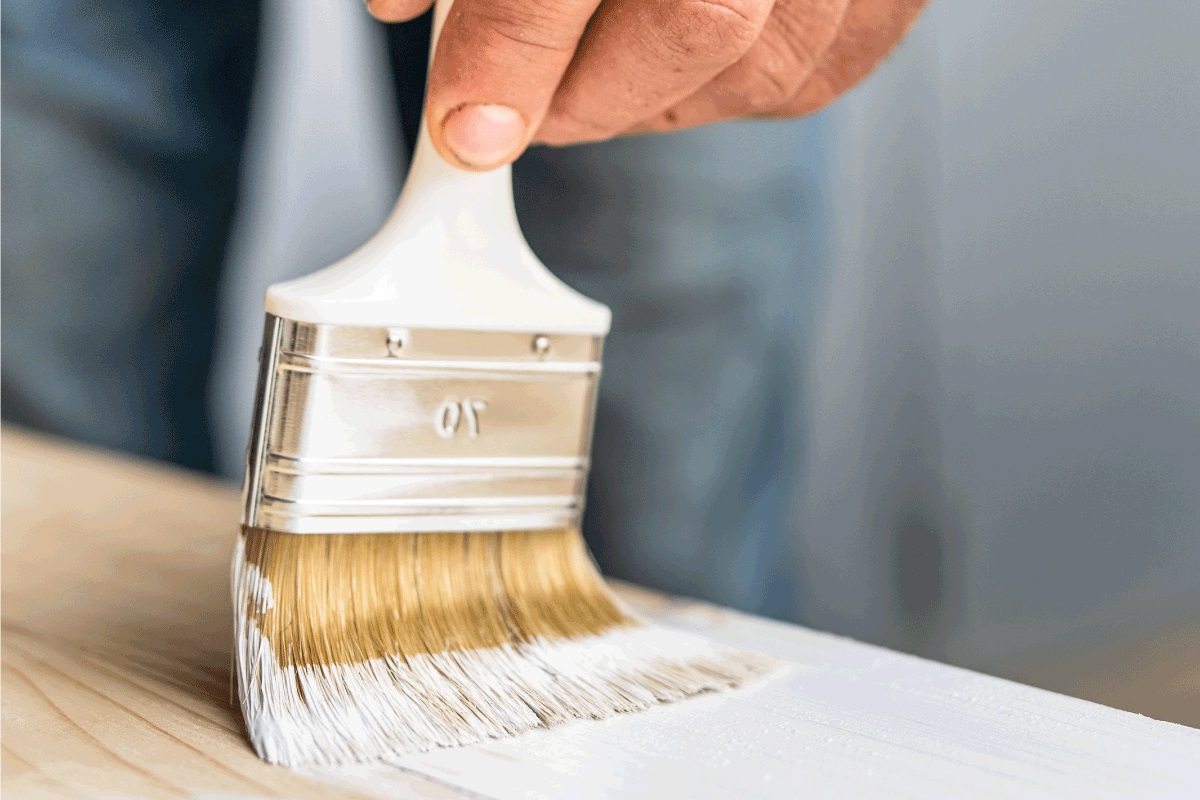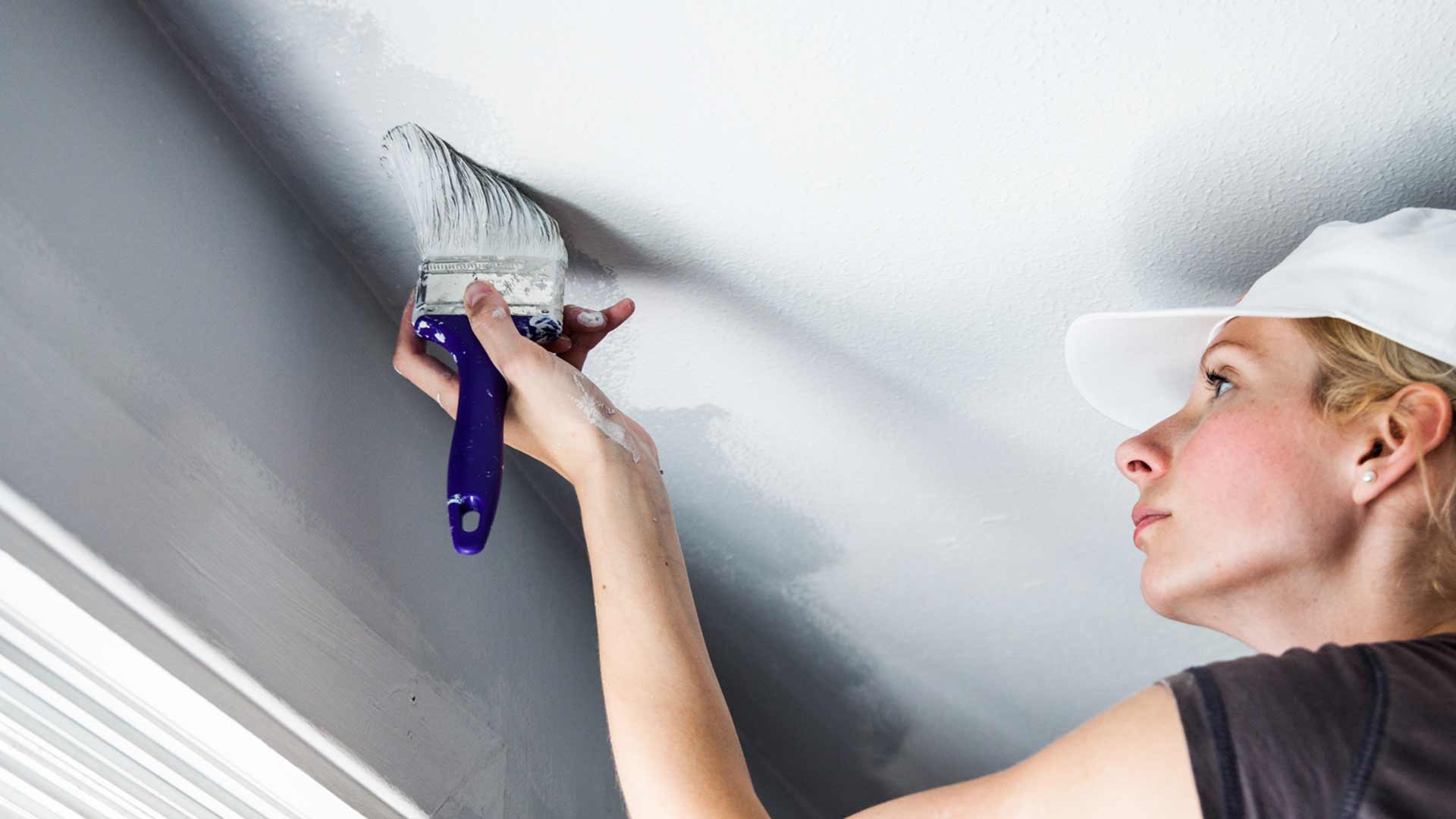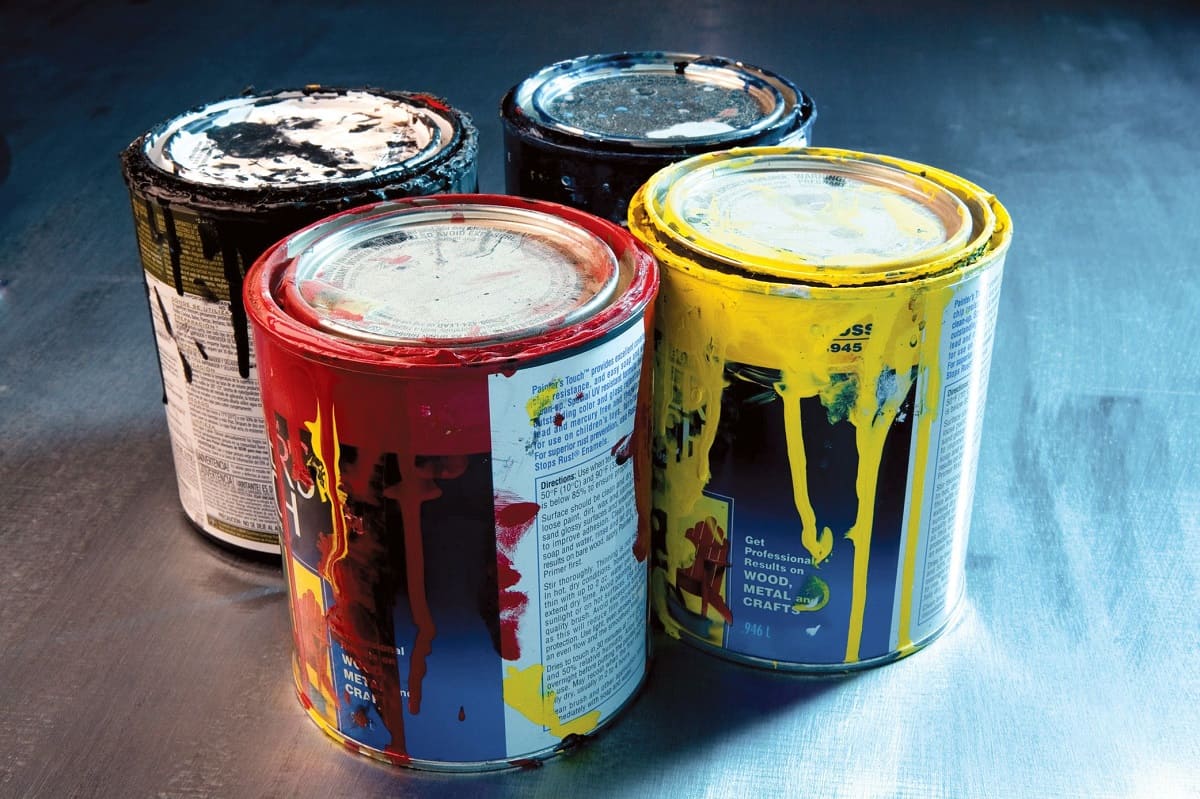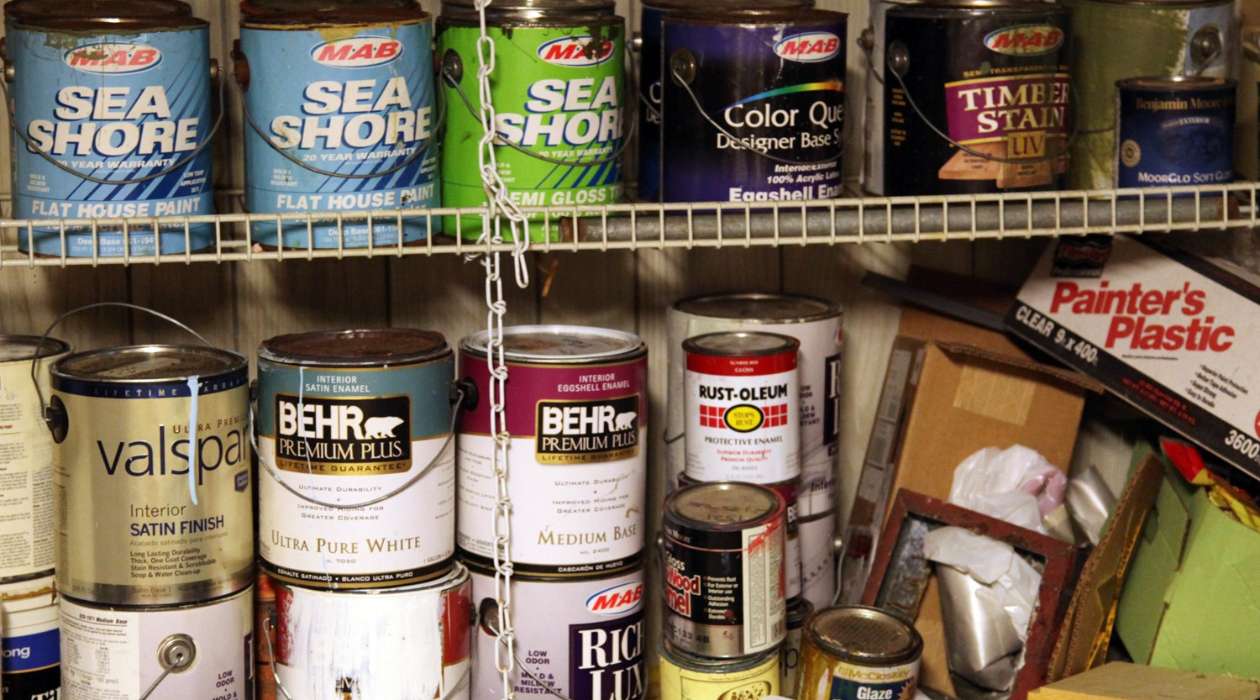

Articles
How To Store Paint Without A Lid
Modified: January 6, 2024
Learn how to store paint without a lid in this helpful article. Find useful tips and tricks to keep your paint fresh and ready for your next project.
(Many of the links in this article redirect to a specific reviewed product. Your purchase of these products through affiliate links helps to generate commission for Storables.com, at no extra cost. Learn more)
Introduction
When it comes to storing paint, most people assume that a lid is an absolute necessity. After all, the lid helps prevent the paint from drying out, spilling, or causing a mess. However, there may be situations where you find yourself without a lid – perhaps you accidentally misplaced it, or maybe the lid got damaged. Whatever the case may be, storing paint without a lid is not impossible, and with proper precautions, you can ensure that your paint remains usable.
In this article, we will explore the reasons why you might need to store paint without a lid, the potential risks associated with this approach, how to choose the right container for paint storage, steps to store paint without a lid, and tips for maintaining the quality of the paint. So, let’s dive in!
Key Takeaways:
- Storing paint without a lid is possible in certain situations, such as emergencies or short-term needs. However, it’s crucial to be aware of the risks and take extra precautions to maintain the paint’s usability.
- Choosing the right container, following proper storage steps, and implementing maintenance tips can help preserve paint quality without a lid. However, finding or acquiring a proper lid as soon as possible is still the best practice for optimal storage conditions.
Read more: How To Store Paint Without A Can
Why Store Paint Without a Lid?
There are several reasons why you might need to store paint without a lid. Here are a few common scenarios:
- Emergency situation: Sometimes, you may need to store paint without a lid due to an unexpected situation. For example, if you’re in the middle of a painting project and accidentally damage or lose the lid, you may not have immediate access to a replacement.
- Short-term storage: If you only need to store the paint for a short period, such as overnight or during a brief break between painting sessions, using a lid may be more hassle than it’s worth. In such cases, you can take temporary measures to keep the paint usable without a lid.
- Convenience: In some instances, you may choose to store paint without a lid simply for convenience. For example, if you’re working on a smaller project and want quick and easy access to the paint, leaving it without a lid can save time and effort.
It’s important to note that these situations are exceptions, and storing paint without a lid should not be the default practice. A lid serves as a crucial barrier that helps maintain the quality and usability of the paint over an extended period.
Now that we understand the reasons behind storing paint without a lid, let’s explore the potential risks associated with this approach.
Potential Risks of Storing Paint Without a Lid
While it’s possible to store paint without a lid in certain situations, it’s important to be aware of the potential risks involved. Here are some of the risks to consider:
- Drying out: One of the biggest risks of storing paint without a lid is that it can dry out quickly. When exposed to air, the solvents in the paint evaporate, causing the paint to thicken and become unusable. This is especially true for water-based paints.
- Contamination: Without a lid, paint is vulnerable to various contaminants such as dust, dirt, and insects. These impurities can affect the quality of the paint and create imperfections when applied to surfaces.
- Increased risk of spills: Paint stored without a lid is more prone to accidental spills. Whether it’s knocked over or accidentally tipped, the lack of a lid makes it easier for the paint to spill, causing damage to surfaces and creating a mess that can be difficult to clean.
- Reduced shelf life: Storing paint without a lid can significantly reduce its shelf life. While properly sealed paint can last for years, paint stored without a lid may only remain usable for a short period.
It’s important to consider these risks before deciding to store paint without a lid. If avoiding these risks is not possible, it’s best to invest in a proper container with a secure lid to ensure the longevity and usability of the paint.
Next, let’s discuss how to choose the right container for storing paint without a lid.
Choosing the Right Container for Paint Storage
When storing paint without a lid, it’s crucial to choose the right container to minimize the risks associated with this approach. Here are some factors to consider when selecting a container:
- Tight seal: Look for a container that can provide a tight seal, even without a lid. This will help reduce the risk of the paint drying out or being contaminated while in storage.
- Durable material: Opt for a container made of a durable and non-reactive material. Plastic containers are a popular choice as they are lightweight, affordable, and resistant to corrosion.
- Transparency: Consider choosing a transparent container to easily identify the paint color and its condition without having to open the container.
- Proper size: Select a container that best fits the amount of paint you need to store. Choosing a container that is too large can leave excess air space, increasing the risk of the paint drying out.
- Ease of use: Look for a container that is easy to handle and pour from. Consider features such as a handle, pour spout, or a wide opening that allows easy access to the paint.
It’s worth noting that while these containers can help minimize the risks, they cannot fully replace the effectiveness of a proper lid. So, if possible, try to locate or acquire a lid for the container. However, if that’s not an option, choosing the right container becomes even more critical.
Now that you have chosen the appropriate container, let’s explore the steps for storing paint without a lid.
Store paint without a lid by covering the opening with plastic wrap and securing it with a rubber band. This will help prevent the paint from drying out and keep it usable for future touch-ups.
Steps to Store Paint Without a Lid
Storing paint without a lid requires some extra precautions to ensure the paint remains usable. Follow these steps to store paint without a lid:
- Clean the container: Before pouring the paint into the container, make sure it is clean and free from any contaminants. Any residue or impurities can affect the paint’s quality.
- Transfer the paint: Carefully pour the paint into the chosen container. Be mindful of not spilling or splattering the paint to minimize any mess or waste.
- Seal the container: Without a lid, you need to find an alternative way to seal the container. One option is to use plastic wrap or a plastic bag. Place a piece of plastic wrap or a plastic bag over the opening of the container and secure it tightly with rubber bands or tape. Make sure the seal is airtight to prevent the paint from drying out.
- Label the container: It’s essential to label the container with the paint color, date of storage, and any other relevant details. This will help you easily identify the paint in the future and keep track of its age.
- Store in a cool, dry place: Find a suitable location to store the container. Ideally, it should be a cool and dry area away from direct sunlight or extreme temperatures, as these factors can negatively impact the paint’s consistency and lifespan.
Remember, while these steps can help maintain the paint’s quality without a lid, it’s still beneficial to find or acquire a proper lid as soon as possible to ensure optimal storage conditions.
Now that you know how to store paint without a lid, let’s discuss some tips for maintaining paint quality in this situation.
Read more: How To Paint Dresser Without Sanding
Tips for Maintaining Paint Quality Without a Lid
Storing paint without a lid requires extra care and attention to maintain its quality. Here are some tips to help you preserve the paint without a lid:
- Minimize air exposure: Whenever you open the container to access the paint, work quickly to minimize the time the paint is exposed to air. The longer it’s exposed, the higher the risk of drying out.
- Use a moisture barrier: To further protect the paint from drying out, consider placing a damp cloth or sponge inside the container. The moisture from the cloth will help maintain the humidity level and prevent the paint from thickening too quickly.
- Store upside down: When storing the container, consider placing it upside down. This position can create a better seal and help prevent air from entering the container. However, ensure that the container is securely sealed to avoid any accidental spills.
- Regularly inspect the paint: Periodically check the paint for any signs of drying out, contamination, or changes in texture or consistency. If you notice any issues, it’s best to discard or properly dispose of the paint to avoid using compromised materials.
- Keep track of storage duration: Record the date when you started storing the paint without a lid. This will help you keep track of how long it has been stored and determine when it may start to degrade in quality.
- Consider alternative storage options: If finding a replacement lid is not possible, you may want to consider transferring the paint to smaller containers or using a pan or tray with a cover that fits snugly. These options can help reduce air exposure and maintain the paint’s usability.
Following these tips can help extend the lifespan of your paint when stored without a lid. However, it’s still advisable to find or obtain a proper lid as soon as possible to ensure optimal storage conditions and preserve the paint for future use.
Now that we’ve covered the tips, let’s wrap up this article.
Conclusion
Storing paint without a lid may not be the ideal approach, but in certain circumstances, it may be necessary. Whether it’s due to an emergency situation, short-term storage, or simply for convenience, there are ways to keep your paint usable without a lid. However, it’s important to be aware of the potential risks and take precautions to maintain the paint’s quality.
Choosing the right container is crucial when storing paint without a lid. Look for a container with a tight seal, made of a durable material, and of the appropriate size. Additionally, consider using plastic wrap or a plastic bag to seal the container, ensuring an airtight seal.
By following the steps outlined in this article, such as transferring the paint, sealing the container, and properly labeling, you can store paint without a lid while minimizing the risks of drying out, contamination, and spills. Don’t forget to store the container in a cool, dry place to further preserve the paint’s quality.
While these measures can help maintain the paint’s usability, it is important to understand the limitations of storing paint without a lid. It’s advisable to find or acquire a proper lid as soon as possible to ensure optimal storage conditions and prolong the paint’s lifespan.
Finally, remember to regularly inspect the paint, minimize air exposure, and consider alternative storage options if necessary. By following these tips, you can enhance the longevity, usability, and quality of your stored paint.
Storing paint without a lid may not be the recommended practice, but with proper care, it can be a temporary solution in certain situations. As always, it’s best to prioritize preventing paint from drying out or becoming contaminated by using a well-sealed container with a lid whenever possible.
Now that you have a better understanding of how to store paint without a lid, you can confidently handle situations when a lid is not available and still ensure the usability of your paint.
Frequently Asked Questions about How To Store Paint Without A Lid
Was this page helpful?
At Storables.com, we guarantee accurate and reliable information. Our content, validated by Expert Board Contributors, is crafted following stringent Editorial Policies. We're committed to providing you with well-researched, expert-backed insights for all your informational needs.















0 thoughts on “How To Store Paint Without A Lid”